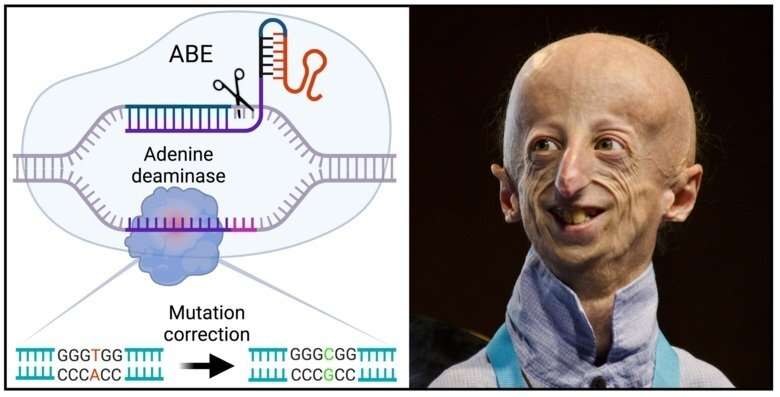Researchers show that mutations in DNA can be corrected with short-term expression of gene editing tools

The most common mutation in the human genome is the C>T mutation, which causes half of all genetic diseases resulting from point mutations. For example, the one causing Hutchinson-Gilford progeria syndrome, a genetic disease in which over 90% have a C>T mutation. In a new study in Nature Communications, researchers at Karolinska Institutet and the Institute for Basic Science in South Korea have shown how short-term gene editing can be used to correct the mutation that causes progeria.
"There are risks associated with previous usage of gene editing tools that are integrated into the cell's DNA, and once a mutation has been corrected, the tools in the cell are no longer needed," says Daniel Whisenant, Ph.D. student at the Department of Biosciences and Nutrition (BioNut), Karolinska Institutet, and shared first author of the study in Nature Communications.
"We used an adenine base editor (ABE) to correct the mutation in progeria," he continues. "But we only expressed the tools we needed for a short time. It still turned out to be sufficient to repair both differentiated and skin stem cells."
In this study, the researchers corrected the mutation in about 21-24% of the skin cells by short-term ABE expression. After 4 weeks, they saw a residual positive effect, where they found mutation corrected cells still present in the tissue and which had also divided and spread into different areas of the skin. This indicates that the corrected cells have gained functionality, are able to divide and contribute to improving the skin's function.
Opens up new possibilities
Although the Hutchinson-Gilford progeria syndrome (HGPS) is a rare disease causing the body to age faster than usual, it is well known and noticed, mainly because studies of progeria can create an increased understanding of aging, but also since children suffering from HGPS display common aging related symptoms, such as cardiovascular disease. Consequently, research on HGPS can be translated for common aging and age associated diseases. Currently, there is one treatment available for children suffering from HGPS, but it is not a cure and the benefits are limited. Therefore, new strategies to treat HGPS are needed.
"In this particular study, we have used gene editing to correct the mutation in the skin, but in future studies, we want to test the method in other tissues," says Maria Eriksson, Professor at the Department (BioNut), who led the study.
"A short-term expression, without detectable toxicity, also opens up the possibility of adding the gene editing tools on several occasions and thus increasing the amount of repaired cells," she says.
More information: Daniel Whisenant et al, Transient expression of an adenine base editor corrects the Hutchinson-Gilford progeria syndrome mutation and improves the skin phenotype in mice, Nature Communications (2022). DOI: 10.1038/s41467-022-30800-y


















